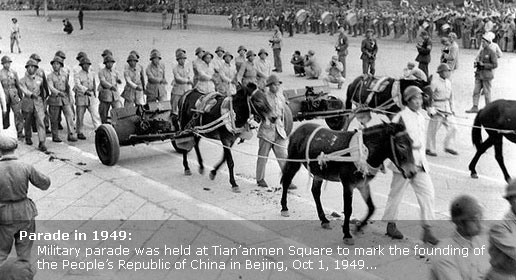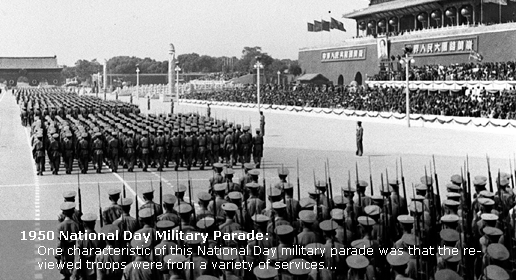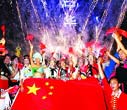60 People, 60 Stories
Taking flight
By Cao Li (China Daily)
Updated: 2009-09-30 07:41
Clad in the latest French Ports dress and clutching a Lancel designer bag, Wu Eryu still remembers her first day at work in 1983.
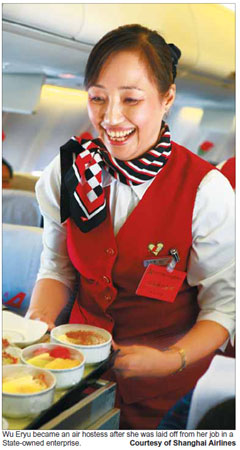
"I wore a coat of yellow and brown check that my mom made for me that day," Wu says.
"It was a colorless time when people made their own clothes and everyone was wearing the same unisex attire so my clothes drew a lot of attention."
Wu, who is now 46, had joined the Shanghai No 2 Textile Machinery Factory under the Shanghai Textile Group. At that time during the country's planned economy, many needed guanxi, or connections, to work at a textile company because the industry offered one of the best-paid jobs in a State-owned enterprise (SOE).
Earning 54 yuan a month, Wu and her colleagues were given everything from housing to cooking pots.
"We did not even need to buy food for the New Year celebrations," she says.
But things soon changed quickly as the country embraced more reform and development.
Around 1990, when the fast-developing economy was eclipsing old modes of manufacturing and emerging industrial centers like Guangdong, Zhejiang and Jiangsu provinces were becoming more competitive, Shanghai's textile industry was losing its luster like many other State-owned sectors.
SOEs began to see their out-of-fashion products piling up at warehouses. In Shanghai's textile industry alone, 600,000 female workers were facing unemployment.
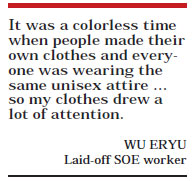
From 1998 to 2001, with SOEs being reformed further, about 8 million workers were reportedly laid off every year. In total, 30 million at the SOEs lost their jobs from 1978 amid reform.
Wu knew she had to find a way out and decided to follow a government initiative to employ laid-off textile workers as air hostesses for the fledgling aviation industry in 1994.
"At that time, everything I knew about being an air hostess was from movies. In my mind, they lived a glamorous life and traveled for free," she says.
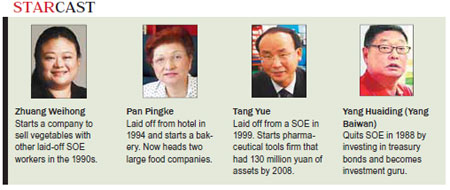
Thousands applied for the job, but only 14 were selected. Wu was one of them.
On March 8, 1995, Wu began her new job and boarded a plane for the first time in her life.
The plane flew from Shanghai to Beijing and back.
That year, Shanghai Airlines was also buying its eighth plane, a Boeing 757, which has since stopped being made.
| ||||
From 2000, the civil aviation industry began to develop in an explosive way.
Shanghai Airlines has 68 planes now. Two months ago, China Eastern announced a merger with the carrier.
Compared with the time she spent at her SOE textile factory, Wu now feels the excitement of being at the frontline of an increasing number of travelers and the growing sophistication of the aviation market.
"More people are taking planes more passengers are protesting when there are delays," she says.
"Everyone knows customers call the shots."
"In a planned economy, people normally stick to one job," Wu says.
"Now we have more opportunities."
Time line
1949
Capitalists control 80 percent of China's mines and transport, as well as nearly all of its financial assets. The new government confiscates these and nationalizes banks, railways, mines and factories.
1953-1956
Public-private partnerships are formed in almost all enterprises. The public sector's share of the economy rises from 21 percent in 1952 to 92 percent in 1956.
1956-1966
The State pays its business people a total of 3.25 billion yuan to buy out their capital and accumulated interests.
1966-76
Public enterprises incorporate nearly all members of society into their organizations during the "cultural revolution".
1986
Pioneer State-owned enterprise (SOE) Shenyang Explosion-proof Appliance Factory announces its bankruptcy.
1997
Premier Zhu Rongji announces a three-year initiative to lay off 1.2 million State textile workers.
1997 - 2001
About 30 million people are laid off from restructured SOEs.
2008
26 Chinese enterprises are listed on the Fortune 500 top-company ranking.
2009
Only 5 percent of Chinese firms, mostly restructured monopolies in crucial sectors, are State-run. Most of the Chinese enterprises listed on the Fortune 500 are SOEs.






